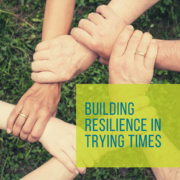How to Break the Negative “Can’t Do” Mindset: High School

The “I can’t” mindset can be detrimental to high school learners. The problem with this negative tunnel vision is that it can easily begin to spill over onto other aspects of a teen’s life. For instance, a high schooler that feels negatively about her ability to do math might transfer that fixed mindset to her ability to learn chemistry, physics, architecture, etc. The negativity creates a destructive snowball effect. High school is a time when students should recognize that the sky’s the limit—they have adulthood and independence right around the corner. A negative mindset can cause teenagers to subconsciously impose restrictions on what they believe they are capable of achieving. To combat this cycle of negative self-perceptions, teachers and parents can implement different exercises, practices, and conversations to encourage a positive outlook for high schoolers looking ahead toward their future.
Show teens that intelligence and ability are not limited to certain tasks, subject areas, or capabilities. Very often, students place much of their self-worth on grades and GPA. And while these are important indicators, they do not accurately measure the whole person’s capabilities. Adults can help by shedding light on “lesser known” examples of intelligent, successful people and instilling a sense of value in different areas of academia, the arts, athletics, etc. Remind high schoolers that school is just one realm for learning and that each person has his or her own strengths. A poetic genius may not be well-versed in math; while a musical prodigy might find history or the sciences more challenging.
When possible, provide high schoolers with options and choices, not only for engaging in the content, but with methods of demonstrating mastery. In providing options, high schoolers become more absorbed with the content they had a hand in choosing. Similarly, when students are given choices in what type of product, project, or demonstration to compose, they are naturally more invested in the outcome. Choices also provide students with a sense of agency—a chance to connect their own ideas and decisions to the impact that these decisions will have.
Explicitly discuss the psychological and neurological findings behind growth mindset. There is a reason why growth mindset has been touted as one of the recent educational buzzwords—there is plenty of research and data to support its claims. High schoolers are at the age to truly grasp their learning tendencies and recognize the plasticity of the brain. Simply put, neural pathways develop and strengthen with repetition and practice. When students understand that they can have a certain amount of control over how much they learn and how well they learn it, school work no longer feels like a task to be undertaken, but more like an opportunity to strengthen their skills and hone new strategies.
Encourage the challenge; discourage busy work or the easy way out. For many students, not just high schoolers, the path of least resistance can often be the most appealing. And that’s understandable—why cause ourselves more trouble or torment in an effort to reach a goal? The answer lies in the methodology behind growth mindset. The more we challenge ourselves, the greater the opportunity to strengthen the neural pathways. When tasks are mundane, simple, or elementary, our brains do not experience the same level of activity as if they do when a process is complex, unfamiliar, or mentally demanding. Explain to high schoolers that, if your goal is to build muscle, you wouldn’t go to the gym to lift 1.5 lb. weights every day. You would increase the weight, reps, and add variations as your workouts progress. It is the same concept when working out our brains. The easy way out may give high schoolers the correct answer, but it does nothing to stretch their limits or develop higher–level thinking skills.






